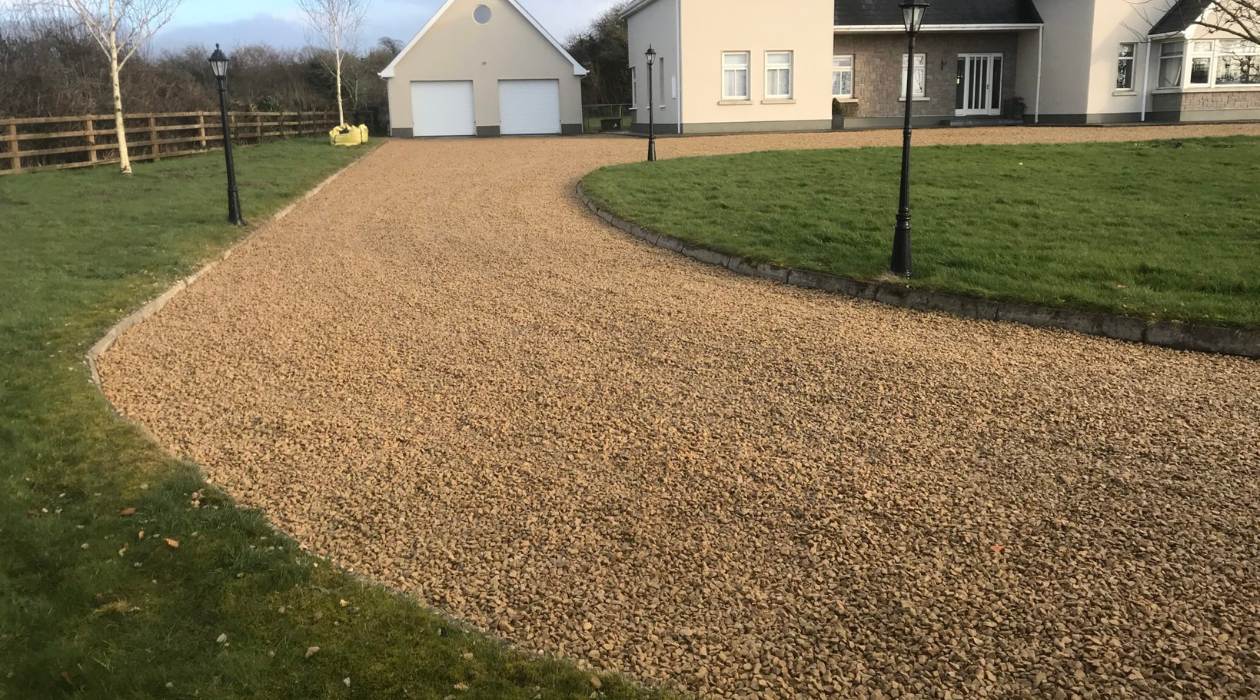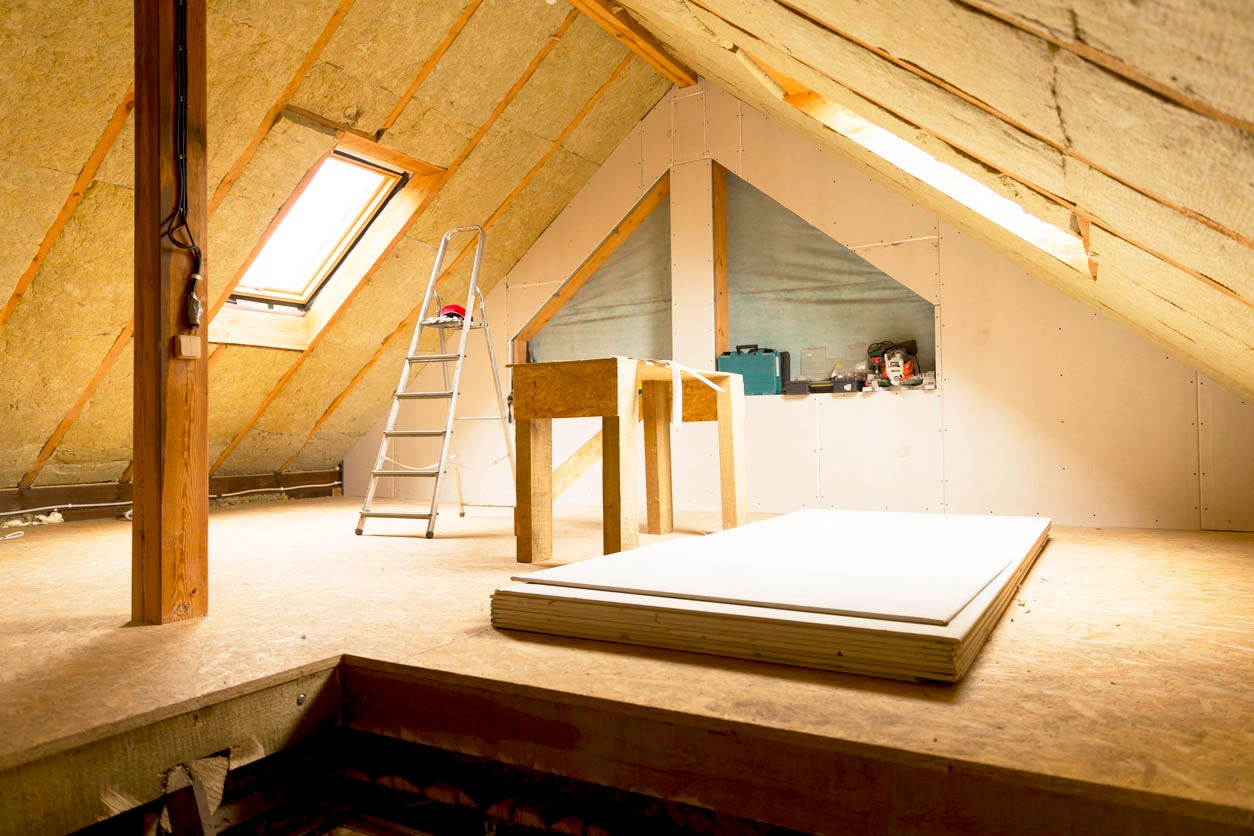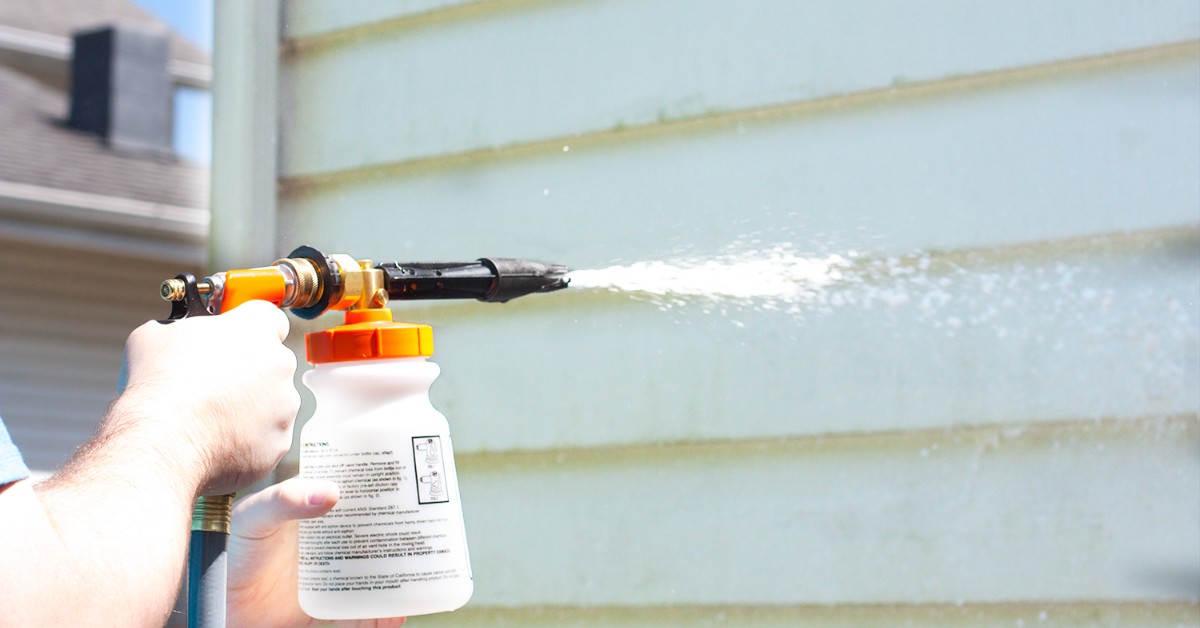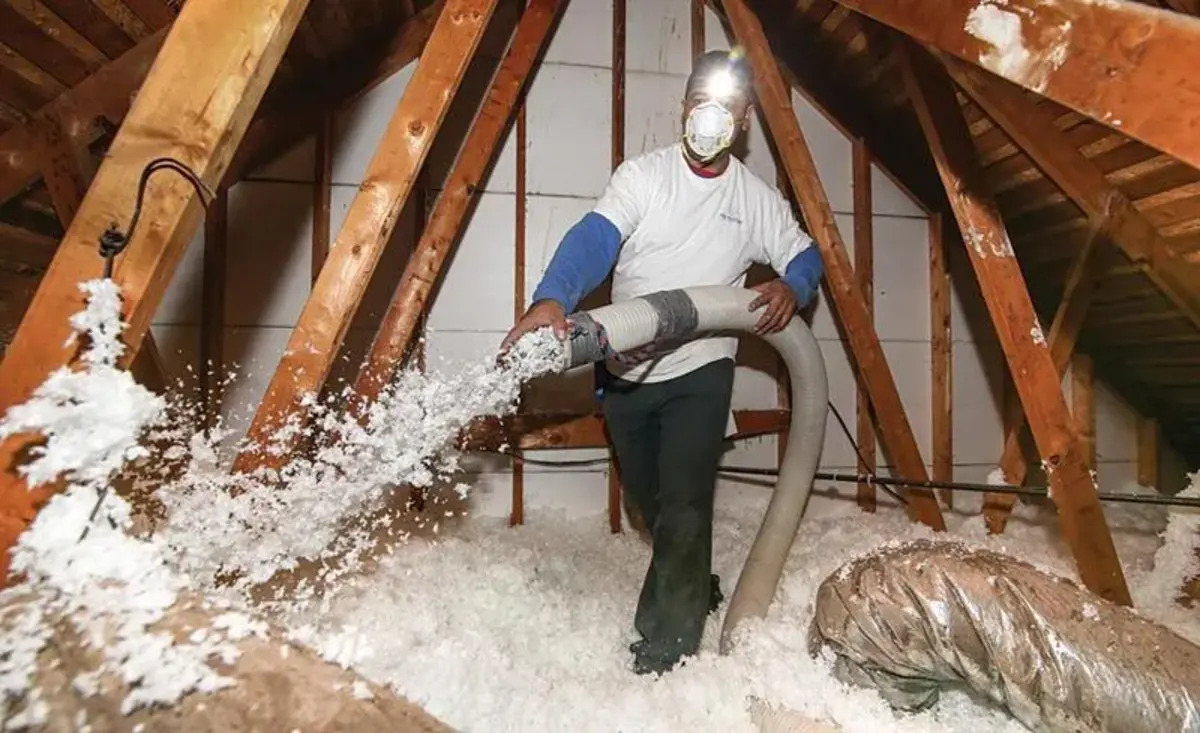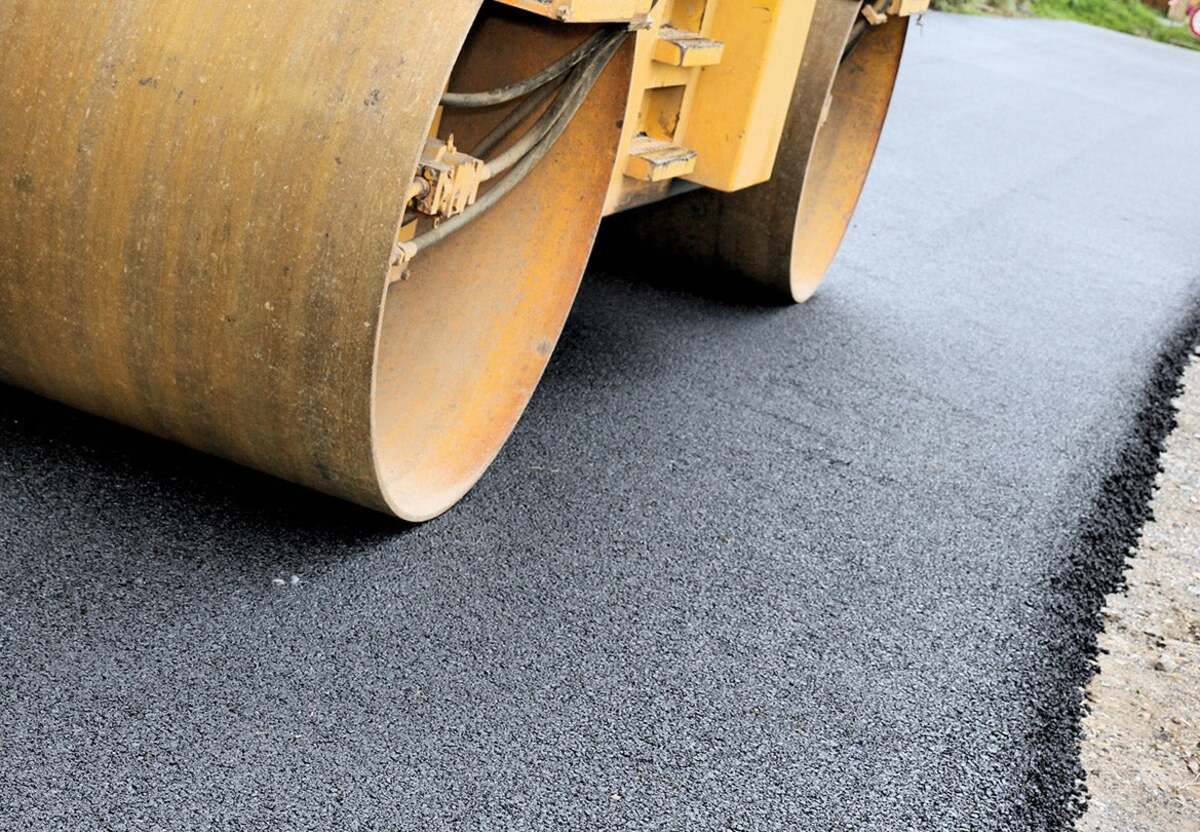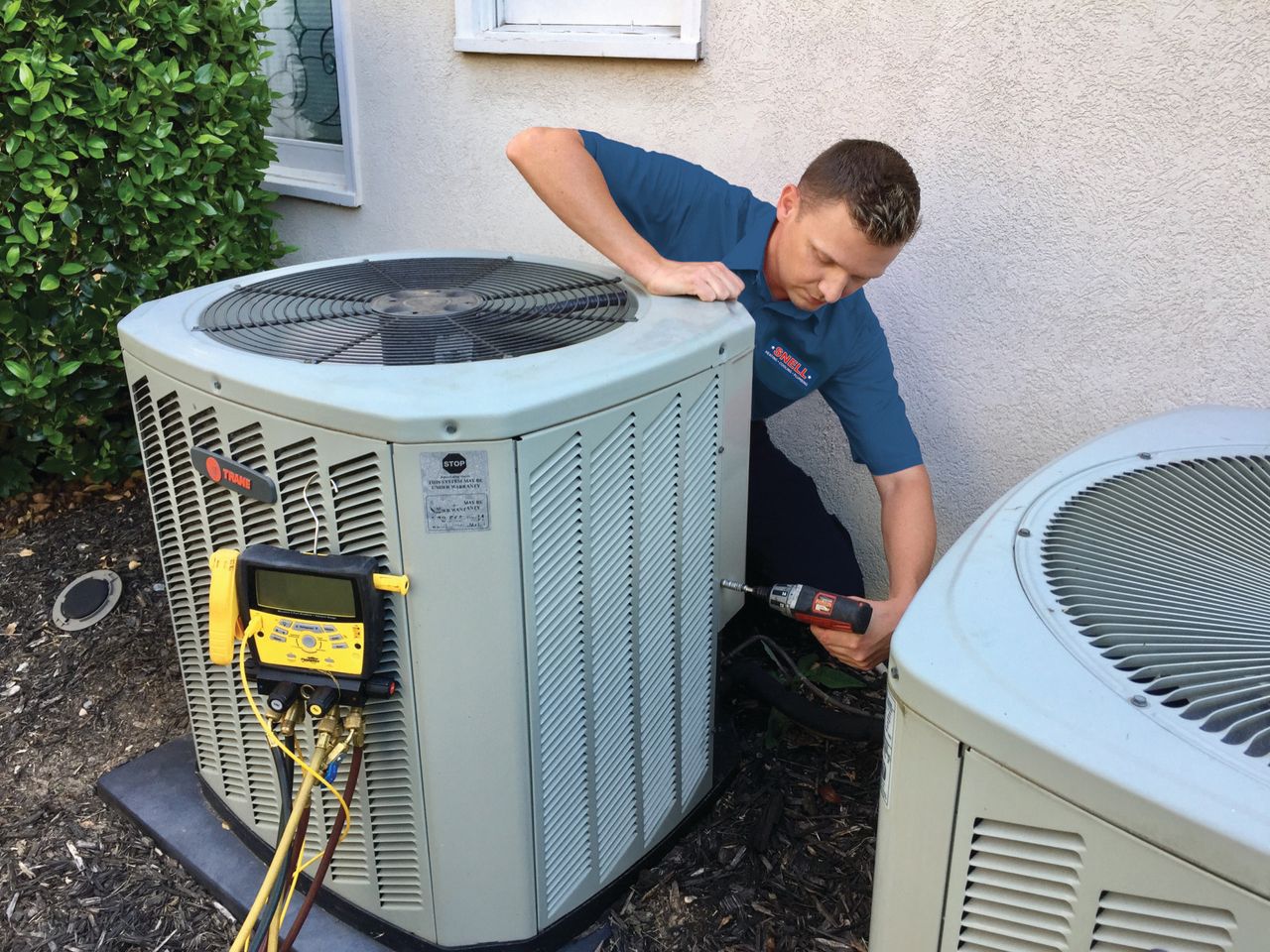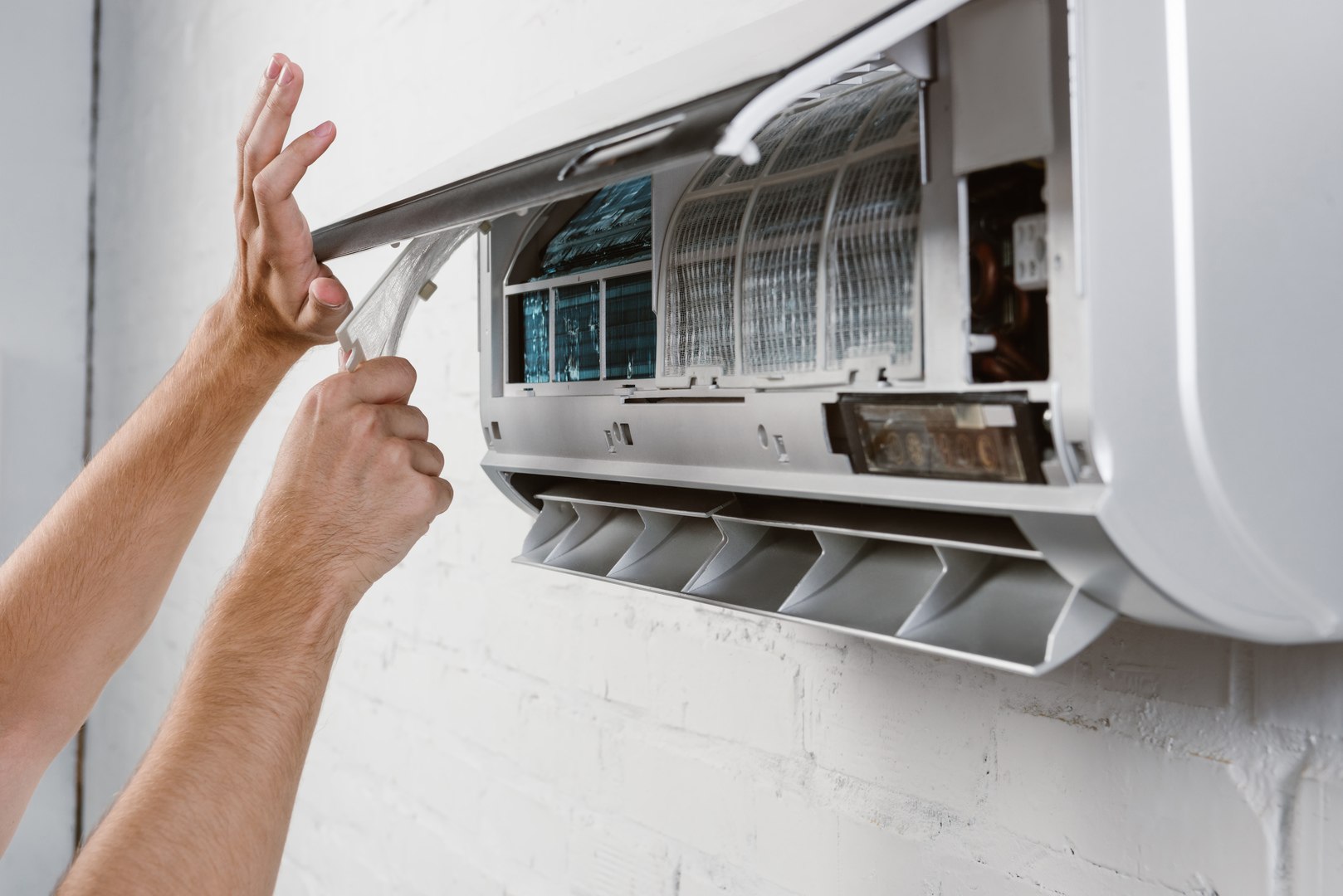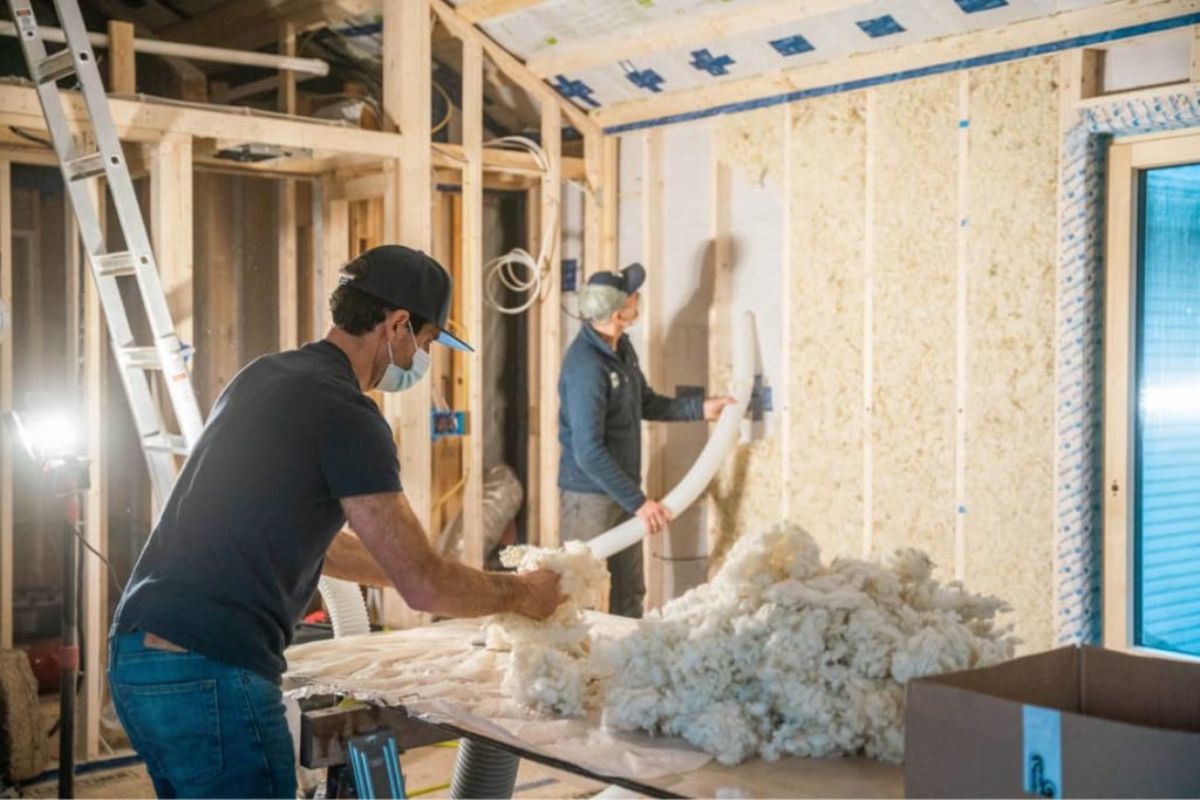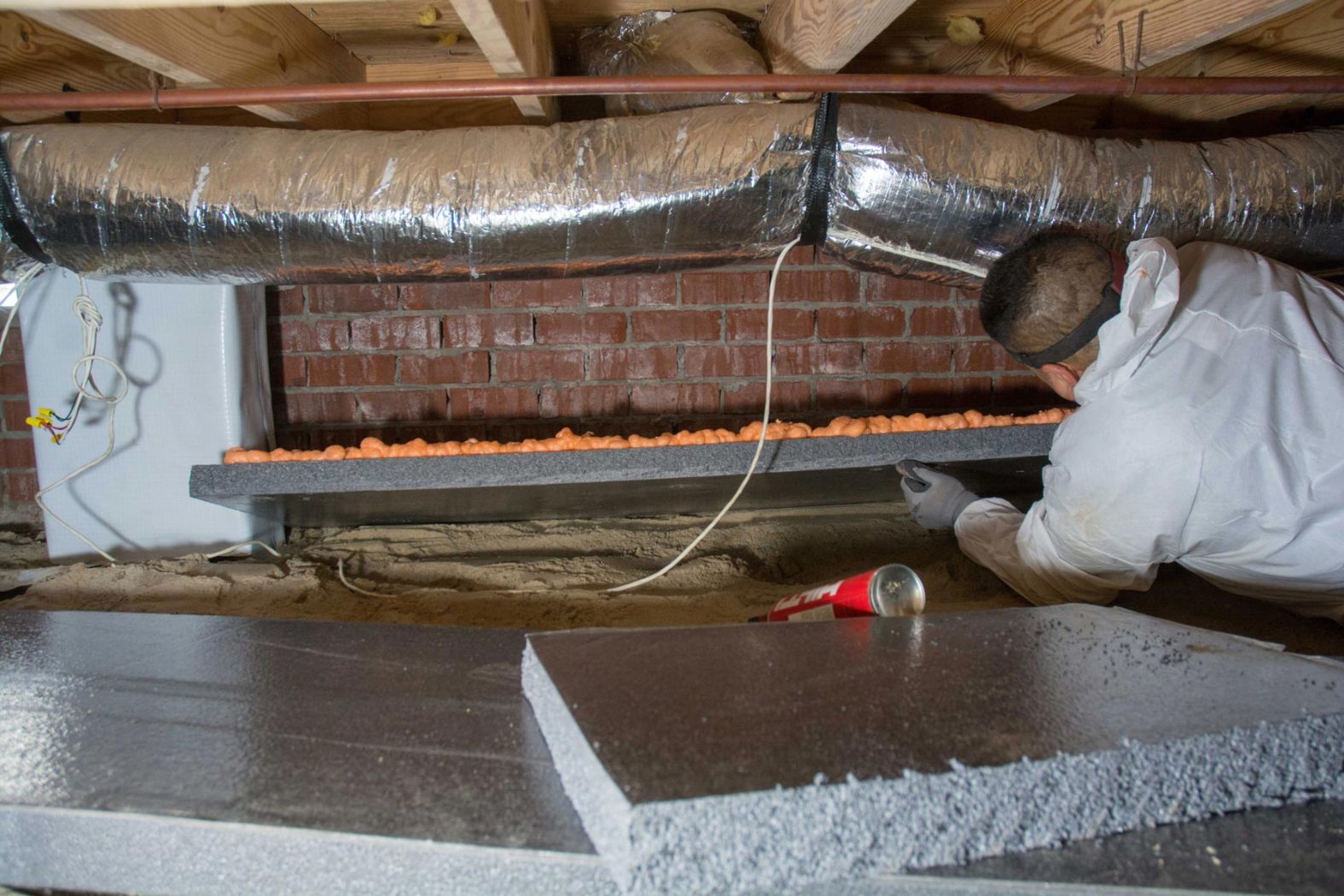Home>Home Maintenance>How Much Does Typical Home Maintenance Cost Per Year
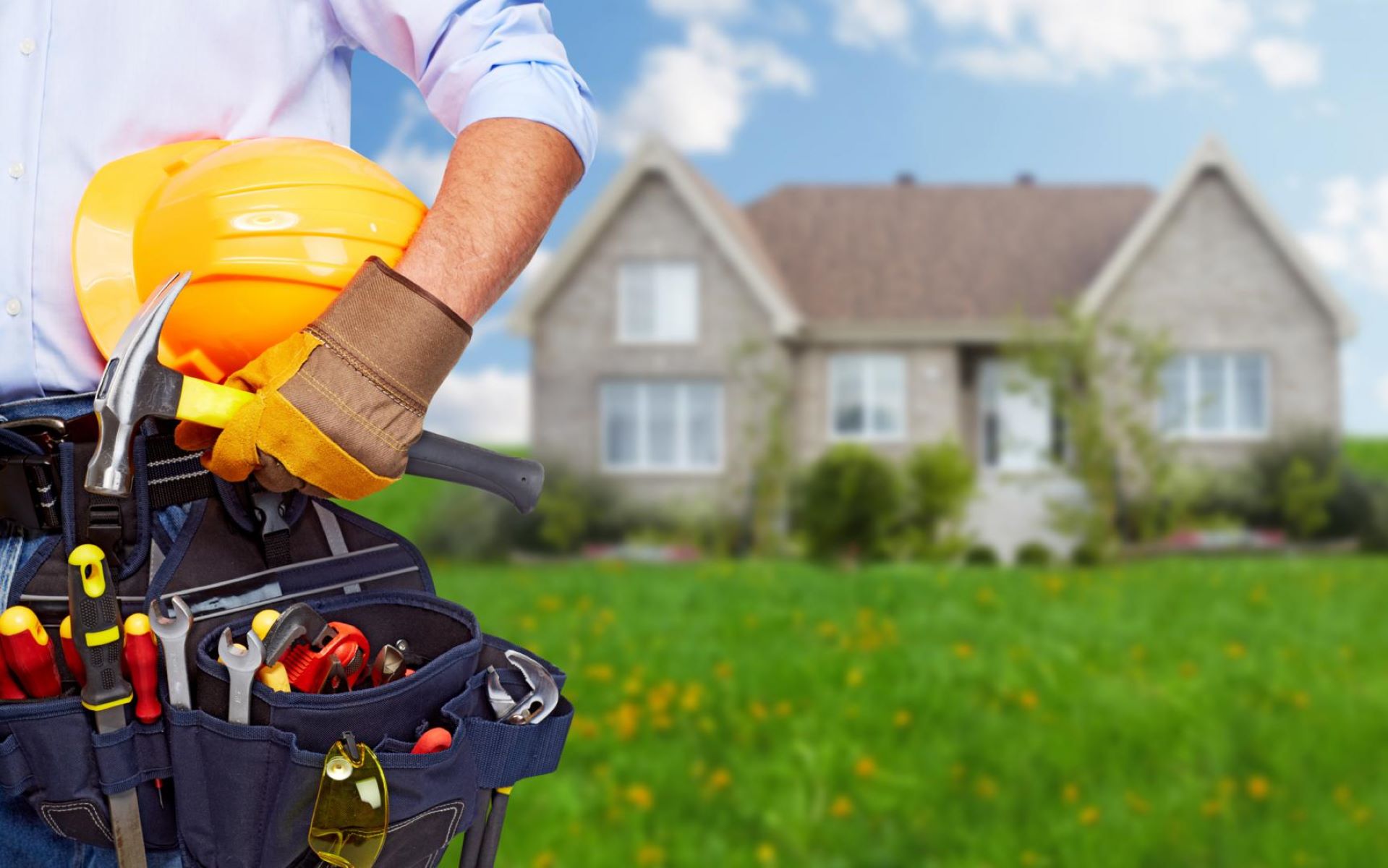

Home Maintenance
How Much Does Typical Home Maintenance Cost Per Year
Modified: March 6, 2024
Learn the average cost of home maintenance per year and essential tips for budgeting. Discover how to keep your home in top shape without breaking the bank.
(Many of the links in this article redirect to a specific reviewed product. Your purchase of these products through affiliate links helps to generate commission for Storables.com, at no extra cost. Learn more)
Introduction
Home maintenance is a crucial aspect of homeownership. Regular upkeep and repairs are necessary to keep your home in good condition and prevent major issues in the future. However, many homeowners may underestimate the costs associated with home maintenance. It’s important to have a clear understanding of the typical home maintenance expenses so that you can budget accordingly.
Understanding how much home maintenance costs can vary depending on various factors such as the size and age of the home, your location, and the level of maintenance required. By familiarizing yourself with these factors, you can better anticipate and budget for the expenses.
In this article, we will discuss the typical costs of home maintenance and the various factors that can impact these costs. We will dive into different categories of home maintenance, including exterior and interior maintenance, HVAC system maintenance, plumbing, electrical, roof and gutter maintenance, landscaping and lawn care, and home appliance maintenance. Additionally, we will explore the importance of regular home inspections and offer practical tips for budgeting for home maintenance costs.
By the end of this article, you will have a comprehensive understanding of the average home maintenance costs per year and be better equipped to manage and plan for the upkeep of your home.
Key Takeaways:
- Regular home maintenance costs can range from 1% to 4% of your home’s value per year. Budgeting and planning for these expenses can help you avoid unexpected financial stress and keep your home in good condition.
- Prioritize regular home inspections and proactive maintenance to catch potential issues early and avoid costly repairs. By budgeting and planning ahead, you can ensure the longevity and comfort of your home.
Understanding Home Maintenance Costs
Home maintenance costs refer to the expenses incurred to repair, replace, or maintain various components of your home. These costs can vary widely depending on factors such as the size and age of the home, local labor and material costs, and the level of maintenance required.
It’s important to note that home maintenance costs are essential for preserving the value and functionality of your property. Neglecting maintenance can lead to more significant and costly repairs down the line. By staying proactive and addressing minor issues promptly, you can avoid major problems in the future.
Typically, home maintenance costs can range from 1% to 4% of the home’s value per year. For example, if your home is valued at $300,000, you can expect to spend anywhere from $3,000 to $12,000 annually on maintenance. However, these figures can vary based on the factors mentioned earlier.
Furthermore, it’s important to note that home maintenance costs are ongoing expenses that you should budget for throughout the year. This way, you can set aside the necessary funds to tackle both routine maintenance tasks and unexpected repairs that may arise.
Now that we’ve established the importance of home maintenance costs, let’s explore the various factors that can impact these expenses.
Factors that Impact Home Maintenance Costs
Several factors can influence the costs associated with home maintenance. Understanding these factors can help you anticipate expenses and plan your budget accordingly. Here are some key factors to consider:
- Size and Age of the Home: The size of your home and its age play a significant role in determining maintenance costs. Larger homes generally require more materials and labor, which can drive up expenses. Older homes may have more wear and tear and may need more frequent repairs and upgrades.
- Location: Your geographical location can impact maintenance costs. Different regions have varying weather conditions and environmental factors that can affect the condition of your home. For example, homes in coastal areas may require more frequent maintenance due to saltwater corrosion, while homes in colder climates may require additional insulation and winterization expenses.
- Level of Maintenance: The level of maintenance your home requires can affect costs. Regularly maintained homes will generally have fewer issues and fewer costly repairs compared to homes that have been neglected. It’s important to stay proactive with maintenance tasks and address any small problems before they escalate into significant repairs.
- Quality of Materials: The choice of materials used in your home can impact maintenance costs. High-quality materials may have a higher upfront cost but can be more durable and require fewer repairs over time. Cheaper materials may need more frequent replacement or repairs, resulting in increased maintenance expenses.
- DIY vs. Professional Contractor: Another factor that can influence costs is whether you choose to tackle maintenance tasks yourself or hire a professional contractor. While DIY projects can save money on labor costs, certain tasks require specialized knowledge and expertise. Improper repairs can lead to further damage, resulting in higher expenses in the long run.
By considering these factors, you can gain a better understanding of the specific maintenance needs and costs associated with your home. This knowledge will help you plan and budget effectively, ensuring that you can address necessary repairs and maintenance without breaking the bank.
Exterior Maintenance
Exterior maintenance is an essential aspect of home upkeep, as it helps protect your property from the elements and maintain its curb appeal. It involves regular inspections and maintenance of various components on the outside of your home. Here are some key aspects of exterior maintenance:
- Roof: Regular roof inspections and repairs are crucial to prevent leaks and structural damage. The cost of roof maintenance can range from simple repairs to complete roof replacements, depending on the extent of the damage and the type of roofing material used.
- Siding: Keeping your siding in good condition not only enhances the aesthetics of your home but also provides protection against moisture and pests. Maintenance tasks for siding may include cleaning, repairing damaged sections, and repainting or refinishing as needed.
- Windows and Doors: Inspecting and maintaining windows and doors is important for energy efficiency, security, and preventing water leaks. Maintenance tasks may include caulking, weatherstripping, cleaning, and repairing or replacing damaged components.
- Gutters and Downspouts: Regularly cleaning and maintaining gutters and downspouts prevents clogs and water damage to your home’s foundation. It’s important to remove leaves, debris, and inspect for any leaks or damage that may require repairs.
- Driveways and Walkways: Repairing cracks and maintaining proper drainage on driveways and walkways helps ensure safety and prolong their lifespan. Routine maintenance may include sealing cracks, pressure washing, and resealing surfaces as needed.
- Exterior Painting: Repainting the exterior of your home not only enhances its appearance but also protects it from weather damage. The frequency and cost of repainting depend on factors such as the type of siding material and local climate conditions.
It’s important to allocate funds for exterior maintenance tasks in your annual budget to address any necessary repairs or maintenance. Regular inspections and proactive maintenance can help extend the lifespan of exterior components and minimize costly repairs in the long run.
Interior Maintenance
While exterior maintenance focuses on the visible parts of your home, interior maintenance is equally important for the overall functionality and comfort of your living space. Here are some key aspects of interior maintenance:
- Plumbing: Maintaining your plumbing system is essential to prevent leaks, clogs, and water damage. Regular inspections, checking for leaks, and addressing any plumbing issues promptly can help avoid costly repairs.
- Electrical Systems: Ensuring the safety and efficiency of your electrical systems is crucial. Regular inspections, checking for faulty wiring, and replacing outdated components can help prevent electrical hazards and maintain proper functionality.
- Heating, Ventilation, and Air Conditioning (HVAC): Regular servicing of your HVAC system ensures its optimal performance and energy efficiency. It involves tasks such as replacing air filters, cleaning coils, and scheduling professional maintenance to address any issues.
- Appliances: Maintaining your home appliances not only extends their lifespan but also prevents potential hazards and breakdowns. Regular cleaning, checking for leaks, and servicing as recommended by manufacturers can help keep your appliances in good working condition.
- Flooring: Depending on the type of flooring in your home, maintenance tasks may include regular cleaning, refinishing, or resealing to maintain its appearance and durability.
- Paint and Wall Maintenance: Regularly inspecting your walls for cracks, peeling paint, or moisture damage is important to address minor repairs and prevent further deterioration. Touching up paint and addressing any underlying issues can help keep your interior walls looking fresh and well-maintained.
Interior maintenance tasks may vary depending on the age and condition of your home. It’s essential to stay proactive by scheduling routine inspections and addressing any issues promptly. By investing in interior maintenance, you can ensure the longevity and safety of your home’s internal systems and components.
Read more: How Much Does Siding Cost Per Square
HVAC System Maintenance
Your HVAC (Heating, Ventilation, and Air Conditioning) system plays a crucial role in keeping your home comfortable year-round. Regular maintenance of your HVAC system is essential to ensure its optimal performance, energy efficiency, and longevity. Here are some key aspects of HVAC system maintenance:
- Air Filter Replacement: The air filter in your HVAC system should be replaced regularly, typically every three months or as recommended by the manufacturer. A clean air filter improves air quality, reduces strain on the system, and helps maximize its efficiency.
- Cleaning Coils and Ducts: Over time, dust and debris can accumulate on the coils and within the ductwork of your HVAC system, affecting its efficiency. Regular cleaning by a professional HVAC technician can help remove the buildup and ensure optimal performance.
- Lubrication: Motors and other moving parts of your HVAC system may require regular lubrication to reduce friction and wear. This maintenance task can help extend the lifespan of these components and prevent breakdowns.
- Checking Refrigerant Levels: To ensure efficient cooling, it’s important to have the refrigerant levels in your air conditioning unit checked and topped up if necessary. Low refrigerant levels can result in reduced cooling capacity and increased energy consumption.
- Inspecting Electrical Connections: Loose or faulty electrical connections within your HVAC system can pose a safety hazard. Regular inspections and tightening of electrical connections can help prevent system malfunctions and potential electrical issues.
- Testing Thermostat: Confirming the accuracy and functionality of your thermostat is crucial for maintaining optimal temperature control in your home. Regularly testing and calibrating your thermostat ensures accurate temperature readings and efficient HVAC system operation.
- Scheduling Professional Maintenance: While there are some DIY maintenance tasks you can perform, it’s advisable to have a professional HVAC technician inspect and service your system at least once a year. They can identify any potential issues, perform necessary repairs, and provide expert advice on keeping your HVAC system in top condition.
Regular HVAC system maintenance not only ensures your home remains comfortable but also helps lower energy costs and extends the lifespan of your equipment. By investing in routine maintenance, you can maximize the efficiency and performance of your HVAC system, ultimately saving you money and providing a more comfortable living environment.
Plumbing Maintenance
Proper plumbing maintenance is essential for the functionality and efficiency of your home’s water supply and drainage system. Regular upkeep and inspections can help prevent costly repairs and water damage. Here are some important aspects of plumbing maintenance:
- Checking for Leaks: Regularly inspecting your plumbing fixtures and pipes for leaks is vital. Even small drips can waste a significant amount of water over time and lead to increased water bills. Promptly address any leaks by repairing or replacing the faulty component.
- Clearing Clogged Drains: Clogged drains can cause inconvenience and potential water backup. Regularly clean drains with natural or commercial drain cleaners to prevent blockages. Avoid pouring grease, food scraps, or other debris down the drains that can contribute to clogs.
- Maintaining Water Heaters: Flushing your water heater annually helps remove sediment buildup and maintain its efficiency. Additionally, check the temperature and pressure relief valve and inspect for signs of corrosion or leaks to ensure the continued operation of your water heater.
- Insulating Pipes: Insulating exposed pipes in cold weather areas can help prevent freezing and potential pipe bursts. Adequate insulation ensures proper water flow and reduces the risk of damage during freezing temperatures.
- Preventing Pipe Corrosion: Monitor the condition of your pipes and address any signs of corrosion promptly. Corroded pipes can lead to leaks or water contamination. Consider installing water treatment systems to mitigate corrosive elements in your water supply.
- Maintaining Toilet Functionality: Regularly inspect and maintain the functionality of your toilets. Check for running toilets, replace flappers if necessary, and ensure proper flushing to conserve water and prevent leaks.
- Scheduling Professional Inspections: While DIY maintenance tasks are valuable, it’s advisable to have a professional plumber inspect your plumbing system annually. They can identify any potential issues, detect hidden leaks, and advise on necessary repairs or upgrades.
By investing in routine plumbing maintenance, you can prevent major plumbing issues and water damage. Promptly addressing minor problems and scheduling professional inspections will not only save you money but also ensure the proper function and longevity of your plumbing system.
Regular home maintenance costs can vary, but a good rule of thumb is to budget 1-3% of your home’s value per year. For a $300,000 home, that’s $3,000-$9,000 annually.
Electrical Maintenance
Electrical maintenance is crucial for the safety and proper functioning of your home’s electrical system. By addressing potential issues and maintaining your electrical components, you can prevent hazards and ensure the reliable operation of your electrical system. Here are some important aspects of electrical maintenance:
- Inspecting Wiring and Outlets: Regularly inspect your electrical wiring and outlets for any signs of damage, such as frayed wires, loose connections, or scorch marks. Addressing these issues promptly can prevent electrical shocks, short circuits, and fires.
- Replacing Faulty Switches and Receptacles: Defective switches and receptacles can be a safety hazard and affect the usability of your electrical outlets. Inspect and replace any switches or receptacles that are damaged, loose, or not functioning correctly.
- Testing Ground Fault Circuit Interrupters (GFCIs): GFCIs are crucial for protecting against electrical shocks in areas where water is present, such as bathrooms, kitchens, and outdoor outlets. Test GFCIs monthly to ensure they are functioning correctly and promptly replace any faulty ones.
- Upgrading Electrical Panels: If your home’s electrical panel is outdated or insufficient for your power needs, consider upgrading to a higher-capacity panel. This ensures that your electrical system can handle the demands of modern appliances and devices safely.
- Checking and Replacing Lightbulbs: Regularly check and replace lightbulbs as needed to maintain proper lighting levels and reduce the risk of electrical problems caused by overheating or mismatched wattages.
- Inspecting and Cleaning Appliances: Appliances, such as refrigerators, dishwashers, and washing machines, should be inspected for frayed cords, damaged plugs, or any other signs of wear. Cleaning appliances, particularly those with ventilation systems, helps prevent dust buildup, which can affect efficiency and potentially create fire hazards.
- Hiring a Professional Electrician: While it’s important to perform basic electrical maintenance tasks, it’s advisable to hire a licensed electrician for more complex electrical work and routine inspections. They can ensure that your electrical system meets safety standards and identify any potential issues that require attention.
By prioritizing electrical maintenance and promptly addressing any issues, you can prevent electrical hazards, reduce the risk of electrical fires, and ensure the safety of your home. Additionally, regular maintenance helps maintain the efficiency and longevity of your electrical components, saving you money in the long run.
Roofs and Gutters Maintenance
Maintaining your roof and gutters is vital for protecting your home from water damage and ensuring its structural integrity. Regular upkeep and inspections can help identify and address any issues before they escalate into costly repairs. Here are some key aspects of roof and gutter maintenance:
- Regular Roof Inspections: Schedule annual inspections by a professional roofer to assess the condition of your roof. They can identify any missing or damaged shingles, leaks, or potential weaknesses that need to be addressed.
- Clearing Debris: Regularly remove leaves, branches, and other debris from your roof to prevent water buildup and potential damage. Clean debris from valleys, gutters, and downspouts to ensure proper drainage.
- Gutter Cleaning: Clean your gutters at least twice a year, ideally in the spring and fall, to prevent clogs that can lead to water damage. Remove leaves, twigs, and other debris from gutters and downspouts to maintain proper water flow.
- Checking for Roof Leaks: Inspect your ceilings and attic for any signs of water stains or leaks. Addressing leaks promptly can prevent water damage to your home’s interior and help preserve the integrity of your roof.
- Trimming Overhanging Tree Branches: Trim tree branches that overhang your roof to prevent them from rubbing against the shingles or causing damage during storms. Falling branches can also cause significant damage to your roof if not properly maintained.
- Repairing Damaged Shingles: Replace any damaged, cracked, or missing shingles as soon as possible. Damaged shingles can lead to moisture penetration and compromise the performance of your roof.
- Sealing Roof Penetrations: Check for any gaps or cracks around roof penetrations, such as vents, chimneys, or skylights. Properly seal these areas to prevent water intrusion and maintain a watertight roof.
- Removing Moss or Algae: If you notice moss or algae growth on your roof, it’s important to remove it promptly. Moss and algae can retain moisture, leading to potential roof damage and deterioration.
Maintaining your roof and gutters not only protects your home from water damage but also extends the lifespan of your roof. With regular upkeep and prompt repairs, you can ensure the durability and functionality of your roof, providing peace of mind and maintaining the value of your property.
Read more: How Much Does Ring Doorbell Cost Per Month
Landscaping and Lawn Maintenance
Landscaping and lawn maintenance not only enhance the aesthetics of your home but also contribute to its overall curb appeal and value. Regular care and attention can help create an inviting outdoor space. Here are some key aspects of landscaping and lawn maintenance:
- Lawn Care: Regularly mow your lawn to maintain a healthy and lush appearance. Set the mower at an appropriate height to avoid cutting the grass too short, which can weaken it. Additionally, water your lawn adequately and address any bare or thin patches by reseeding or sodding as needed.
- Weed Control: Regularly inspect your lawn and gardens for weeds and address them promptly. Pull out weeds by hand or use herbicides as necessary. Implementing a weed control program can help maintain the health and beauty of your landscaping.
- Tree and Shrub Maintenance: Prune trees and shrubs to remove dead or overgrown branches. Trimming can help promote healthy growth and improve the appearance of your landscaping. It’s important to trim trees away from your home and power lines to prevent potential damage and hazards.
- Plant Care: Provide proper care to your plants, including watering, fertilizing, and pest control. Different plants may require specific care, so familiarize yourself with their needs to ensure their health and vibrancy.
- Mulching: Apply a layer of mulch around your plants and flowerbeds. Mulch helps regulate soil temperature, retain moisture, and suppress weed growth. It also adds a polished look to your landscaping.
- Irrigation System Maintenance: If you have an irrigation system, inspect and maintain it regularly. Check for leaks, adjust sprinkler heads, and ensure proper coverage to avoid water waste and ensure effective watering.
- Seasonal Maintenance: Adjust your landscaping and lawn care practices based on the seasons. This may include raking leaves in the fall, winterizing your lawn in colder climates, and preparing for new growth in the spring.
- Professional Landscape Services: Consider hiring a professional landscaper for more complex tasks or to help maintain your landscaping if you have a large or intricate outdoor space. They can offer expertise, save you time, and ensure your landscaping looks its best.
Regular landscaping and lawn maintenance help create an inviting outdoor environment and enhance your home’s overall appeal. By investing time and effort into your landscaping, you can create a beautiful and relaxing space that you can enjoy and be proud of for years to come.
Home Appliance Maintenance
Regular maintenance of your home appliances is important for their longevity, efficiency, and safety. By taking care of your appliances, you can prevent breakdowns, save on energy costs, and avoid unnecessary expenses. Here are some key aspects of home appliance maintenance:
- Cleaning and Care: Regularly clean your appliances to remove dirt, dust, and debris that can affect their performance. Follow manufacturer recommendations for cleaning specific appliances, such as refrigerators, ovens, dishwashers, and washing machines.
- Checking Seals and Gaskets: Inspect the seals and gaskets on your refrigerator and oven doors to ensure they are intact and sealing properly. Damaged or loose seals can lead to energy inefficiency and spoilage of perishable items.
- Filter Maintenance: Replace or clean filters in appliances such as air conditioners, range hoods, and vacuum cleaners. Clogged or dirty filters reduce efficiency and can strain the appliance’s motor.
- Regular Defrosting: If you have a freezer or refrigerator that requires manual defrosting, make sure to defrost it regularly to prevent ice buildup. Excessive ice can affect the appliance’s cooling capability and increase energy consumption.
- Inspecting Hoses and Vents: Regularly check hoses and vents in your washing machine, dishwasher, and dryer for any signs of blockages, leaks, or damage. Clean or replace hoses as needed and ensure proper ventilation to prevent potential hazards.
- Professional Servicing: Consider scheduling professional servicing for certain appliances, such as furnaces, air conditioning units, or gas appliances. A qualified technician can perform comprehensive maintenance, inspect for safety issues, and diagnose and repair any problems.
- Reading the Owner’s Manual: Familiarize yourself with the owner’s manuals for your appliances. They provide specific instructions on maintenance, troubleshooting, and safety precautions for each appliance in your home.
- Power Management: Be mindful of how you use your appliances and practice energy-saving habits. Unplug unused appliances and avoid overloading circuits to prevent electrical issues and reduce energy consumption.
By incorporating regular appliance maintenance into your routine, you can extend the lifespan of your appliances and avoid costly repairs or replacements. Remember, a little maintenance goes a long way in keeping your appliances running smoothly and efficiently, ultimately saving you time, money, and headaches.
Regular Home Inspections
Regular home inspections are essential for identifying potential issues, ensuring the safety of your home, and maintaining its overall condition. By conducting thorough inspections at predetermined intervals, you can catch problems early on and prevent them from escalating into costly repairs. Here are some key aspects of regular home inspections:
- Structural Inspection: A structural inspection assesses the overall integrity of your home’s foundation, walls, roof, and other structural components. It identifies any signs of settlement, cracks, or deterioration that may require attention.
- Electrical Inspection: An electrical inspection evaluates the safety and functionality of your home’s electrical system. A licensed electrician can check for proper wiring, grounded outlets, and the absence of potential electrical hazards.
- Plumbing Inspection: A plumbing inspection examines your home’s plumbing system for leaks, clogs, or any signs of damage. It includes checking faucets, toilets, drains, water heaters, and exposed pipes for potential issues.
- Roof Inspection: A roof inspection assesses the condition of your roof, identifying any missing shingles, leaks, or signs of damage. It helps determine if repairs or maintenance are necessary to maintain a watertight and structurally sound roof.
- HVAC Inspection: An HVAC inspection involves assessing the performance and efficiency of your heating and cooling system. A professional technician can check for any issues, perform necessary maintenance, and ensure optimal functionality.
- Appliance Inspection: An appliance inspection examines the condition and functionality of your home appliances. It includes checking for leaks, performance issues, and potential safety hazards. Regular inspections help identify maintenance needs and prevent unexpected breakdowns.
- Exterior Inspection: An exterior inspection focuses on the exterior components of your home, such as siding, windows, doors, and decks. It helps identify any signs of damage, deterioration, or potential areas of concern that may require maintenance or repair.
- Fire Safety Inspection: Conducting a fire safety inspection ensures that your home is equipped with functioning smoke detectors, fire extinguishers, and fire escape plans. It helps ensure the safety of your household in the event of a fire.
Regular home inspections provide peace of mind by identifying potential issues before they become major problems. Depending on the age and condition of your home, you may need to schedule inspections annually or every few years. Consider hiring professionals for specialized inspections to ensure comprehensive assessments and accurate evaluations of your home’s various systems and components. By staying proactive with regular inspections, you can maintain a safe, comfortable, and well-maintained home.
Budgeting for Home Maintenance Costs
Effective budgeting for home maintenance costs is crucial to ensure that you have the necessary funds to address routine upkeep and unexpected repairs. By planning ahead and setting aside money specifically for home maintenance, you can avoid financial stress and maintain the value and functionality of your home. Here are some key steps to help you budget for home maintenance costs:
- Estimate Annual Maintenance Costs: Review your home and create a list of all the potential maintenance tasks and their associated costs. Consider factors such as the size and age of your home, the condition of its components, and previous maintenance expenses. Use this information to estimate an annual maintenance budget.
- Allocate Funds Regularly: Set aside a specific amount of money each month or with each paycheck for your home maintenance fund. Treat it as an essential expense, just like your bills or mortgage payment. Consistently contributing to this fund ensures that you have funds available when needed.
- Build an Emergency Fund: Alongside your regular home maintenance fund, create an emergency fund specifically for unexpected repairs or replacements. Aim to save at least 10% of your annual home maintenance budget to cover unexpected expenses that may arise.
- Prioritize and Plan: Prioritize your maintenance tasks based on urgency and importance. Plan for routine tasks like HVAC servicing, gutter cleaning, or tree trimming, as well as larger projects like roof replacements or appliance upgrades. This allows you to allocate funds accordingly throughout the year.
- Research and Obtain Multiple Quotes: When planning for larger maintenance projects, gather multiple quotes from reputable contractors. This helps you compare prices and find the best value without compromising the quality of the work. By budgeting for these larger projects in advance, you can better manage their costs.
- Regularly Review and Adjust: Periodically reassess and adjust your maintenance budget based on your actual expenses and any changes to your home or circumstances. This allows for flexibility and ensures that your budget remains realistic and sufficient to meet your home’s needs.
- Take Advantage of Maintenance Contracts or Warranties: Some appliances or systems may come with maintenance contracts or warranties. Utilize these services to keep your items in good condition and potentially save on repair or replacement costs.
- Perform DIY Tasks: Whenever possible and safe, consider performing certain maintenance tasks yourself. Simple tasks like replacing air filters, cleaning gutters, or caulking can save you money on labor costs.
By budgeting for home maintenance costs, you’ll have the financial resources necessary to keep your home in good condition. Taking a proactive approach to maintenance and planning ahead will help you avoid unexpected expenses, protect your investment, and ensure a comfortable living environment for years to come.
Conclusion
Home maintenance is a vital aspect of homeownership that should not be overlooked. By understanding the typical costs of home maintenance and the factors that can impact them, you can better anticipate and budget for the necessary expenses. Regular maintenance tasks such as exterior and interior upkeep, HVAC system maintenance, plumbing and electrical maintenance, roof and gutter maintenance, landscaping and lawn care, and appliance maintenance are essential for preserving the value, functionality, and safety of your home.
By conducting regular home inspections and staying proactive with maintenance tasks, you can catch potential issues early on and address them before they escalate into costly and extensive repairs. Additionally, proper budgeting for home maintenance costs ensures that you have the necessary funds set aside to tackle routine maintenance and unexpected repairs as they arise.
Remember to allocate funds regularly to your home maintenance budget, including both routine upkeep and emergency repairs. Prioritize your maintenance tasks, seek multiple quotes for larger projects, and stay proactive in performing basic maintenance tasks to save costs and extend the lifespan of your home’s components.
In conclusion, home maintenance requires careful attention and financial planning, but the effort is well worth it. By investing in the upkeep of your home, you can maintain its value, increase its longevity, and create a safe and comfortable living environment for you and your loved ones. Prioritize maintenance, stay proactive, and budget wisely to ensure the continued beauty, functionality, and enjoyment of your cherished home.
Frequently Asked Questions about How Much Does Typical Home Maintenance Cost Per Year
Was this page helpful?
At Storables.com, we guarantee accurate and reliable information. Our content, validated by Expert Board Contributors, is crafted following stringent Editorial Policies. We're committed to providing you with well-researched, expert-backed insights for all your informational needs.

